City of Steel
City of Steel
How Pittsburgh Became the Worlds Steelmaking Capital During the Carnegie Era
Ken Kobus
Rowman & Littlefield
Lanham Boulder New York London
Published by Rowman & Littlefield
A wholly owned subsidiary of The Rowman & Littlefield Publishing Group, Inc.
4501 Forbes Boulevard, Suite 200, Lanham, Maryland 20706
www.rowman.com
Unit A, Whitacre Mews, 26-34 Stannary Street, London SE11 4AB
Copyright 2015 by Rowman & Littlefield Publishers, Inc.
All rights reserved . No part of this book may be reproduced in any form or by any electronic or mechanical means, including information storage and retrieval systems, without written permission from the publisher, except by a reviewer who may quote passages in a review.
British Library Cataloguing in Publication Information Available
Library of Congress Cataloging-in-Publication Data
Kobus, Ken.
City of steel : how Pittsburgh became the worlds steelmaking capital during the Carnegie era / Kenneth J. Kobus.
pages cm
Includes bibliographical references and index.
ISBN 978-1-4422-3134-4 (cloth : alk. paper) -- ISBN 978-1-4422-3135-1 (electronic) 1. Steel industry and trade--Pennsylvania--Pittsburgh--History--20th century. 2. Pittsburgh (Pa.)--History--20th century. I. Title.
HD9518.P57K63 2015
338.4'7669142097488609034--dc23
2014049895
 The paper used in this publication meets the minimum requirements of American National Standard for Information SciencesPermanence of Paper for Printed Library Materials, ANSI/NISO Z39.48-1992.
The paper used in this publication meets the minimum requirements of American National Standard for Information SciencesPermanence of Paper for Printed Library Materials, ANSI/NISO Z39.48-1992.
Printed in the United States of America
This book is dedicated to my wife, Linda, who spent many long, boring hours with me in libraries and archives while I was pondering the mysteries of steel, and for listening to and reading my work when I know that she really wished to be doing almost anything else.
Foreword
The author has produced a book that will be required reading for all students of the steel industry. Beginning with a detailed history of the development of early steelmaking up through the time of Andrew Carnegie, some startling insights are revealed. Why was the original American steelmaking centered in Pittsburgh? Was Andrew Carnegie really the one-sided man history has drawn him to be? Why was Carnegie so successful in attracting and motivating talented subordinates? These and other characteristics of the mannot previously identifiedare studied in some detail. Andrew Carnegie emerges as a much more enlightened and warmer figure than previous biographers have described. The book is meticulously researched and annotated. This author should be applauded for challenging some long-held mythology surrounding Andrew Carnegie.
T. C. Graham
Mr. Graham is the former president and CEO of Jones and Laughlin Steel, president of United States Steel Corporation or USX Corporation, chairman and CEO of Washington Steel Corporation, chairman and CEO of AK Steel, and president and CEO of Armco Steel Company, LP.
Acknowledgments
I thank the following persons for their contributions: first and foremost I thank Dr. Kenneth Warren, Emeritus Fellow, University of Oxford, Jesus College, for many years of friendship, discussion, guidance, and encouragement; Tom Graham, former president of United States Steel Corporation, for believing in and endorsing this project; Bill Roemer, for his much-needed and welcomed assistance in editing the text; Ron Baraff, director of Museum Collections and Archives; Tiffani Emig, curator; and August Carlino, president and CEO of the Steel Industry Heritage Corporations Rivers of Steel National Heritage Area in Homestead, Pennsylvania, for reviewing my work, assisting in my searches, and being a sounding board; Lawrence John, MD, my personal physician, a friend, and a constant fountain of optimism; Jim Saunders, my boss, who taught me much about the interworkings of the mill, Joel Tarr, Richard S. Caliguiri Professor of History and Policy, Heinz College at Carnegie Mellon University; David Hounshell, David M. Roderick Professor of Technology and Social Change at Carnegie Mellon University, and Edward K. (Ted) Mueller, Department of History of the University of Pittsburgh, for being advocates and supporters of this and other historical research projects of mine; Rod Sellers, Southeast Chicago Historical Society; Gil Pietrzak, librarian, Pennsylvania Department, Carnegie Library of Pittsburgh; Adam Ryan, Carnegie Museum of Art, Pittsburgh; Miriam Meislik, University of Pittsburgh Archives Service Center; Sierra Green and Alexis Macklin, Senator John Heinz History Center; Lynsey Sczechowicz, Hagley Museum and Library; many helpful reference librarians at Carnegie Library of Pittsburgh, Main Library, as well as reference librarians at the University of Pittsburgh, Hillman Library for assisting me with the numerous reference, book, and photo searches required by this project; and finally to Jed Lyons of Rowman & Littlefield, who provided me the opportunity to publish this work.
Introduction
The dominant position that Pittsburgh held in the world of heavy industry is certainly well documented and, as far as the production of iron and steel is concerned, the leadership role that it held over the entire world is unquestionable. Legions of people identify this city with the steel industry, and those associations became so intimately interwoven that the words Pittsburgh and steel became synonymous. This idea still prevails, despite the fact that in todays world the regions manufacturing output is miniscule when compared with the past or to that of other areas of the United States, and especially so when measured against the rest of our planet. Still, while Pittsburgh would have been an important steelmaking district, I suggest to you that it should not have become the steelmaking capital of the world.
For instance, Eber Ward rolled the first steel rail in the United States, which was made in Chicago in 1865. The steel for that rail was produced in Wyandotte, Michigan, where the nations first Bessemer steel was made under the direction of William Durfee. In 1870, a visiting German concluded that St. Louis offered the soundest foundation for the manufacture of iron and Bessemer steel. During 1889, for example, the newly formed Illinois Steel Company was believed to have a larger output than any other steel company in the world, although it employed fewer men than the Krupp works at Essen. The Illinois Steel Companys plants were located in and around the Chicago area. What, then, led Pittsburgh down the path to its commanding position over the worlds steel industry? Since the reasons for Pittsburghs success have never been fully presented by any historian, the answer requires that one first understand the methods involved in manufacturing steel, which has become one of our modern worlds most basic requirements. Late nineteenth-century America was on the cusp of change from an agrarian to an industrial economy. The materialization of this countys steel industry was a driving force behind that transition.
During the middle third of the nineteenth century in the Pittsburgh region, a large industrial base was developed through the manufacture of wrought iron followed by the making of crucible steel. Soon these new materials were used in the fabrication of many useful goods. They became widely distributed throughout Americas rapidly emerging Western Reserve on this side of the Allegheny Escarpment, aided by the extensive river network flowing from the Pittsburgh gateway in that direction. The mountains were a major impediment to shipping these same goods to the more civilized society in the east, requiring either a long walk or a slow ride on your choice of the Erie or Pennsylvania canals, or perhaps a trip on the fledgling Pennsylvania Railroad.
Next page



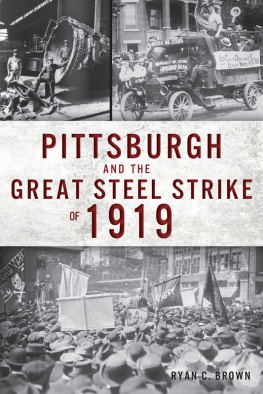
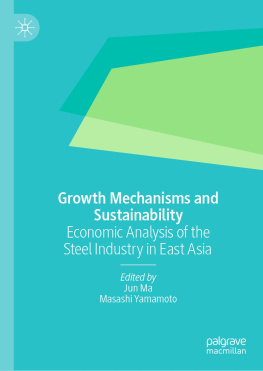
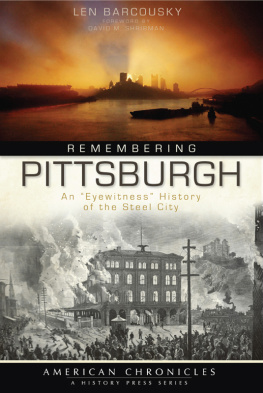

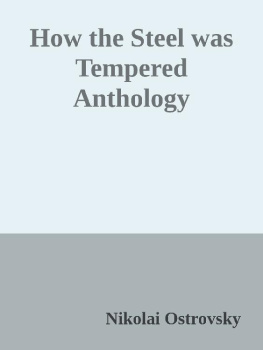
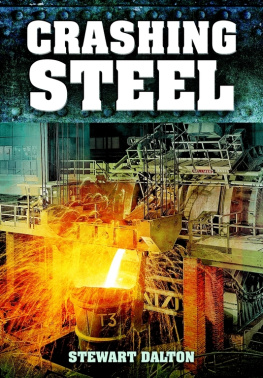
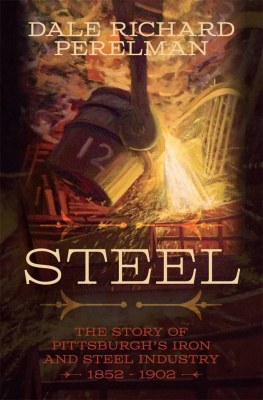
 The paper used in this publication meets the minimum requirements of American National Standard for Information SciencesPermanence of Paper for Printed Library Materials, ANSI/NISO Z39.48-1992.
The paper used in this publication meets the minimum requirements of American National Standard for Information SciencesPermanence of Paper for Printed Library Materials, ANSI/NISO Z39.48-1992.